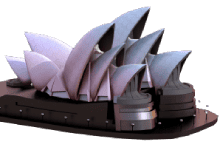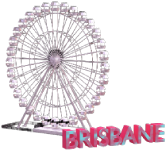I can’t tell you how many times I’ve clicked on an intriguing ad only to abandon the landing page because it was either irrelevant or disconnected from the ad’s message, lacked a clear call-to-action (CTA), or failed to provide a good user experience.
It’s critical to have a strategy in mind for focusing your attention on the ultimate goal when developing a landing page: conversions. Follow these 10 steps to make your landing page more conversion-oriented!
1. A Strong, Compelling Headline
It’s critical to keep your consumers’ needs in mind while developing your landing page. What will pique their curiosity? How are you going to persuade them to advance through your site?
Begin with a strong and compelling headline. To avoid any confusion or users bouncing from your page without converting, make sure your headline and content are consistent with the ad copy.
2. Purposeful, Clear, and Concise Content
Your landing page content’s goal is to assist visitors in navigating the website. Every word on the page should be used to help clients understand your offer and to encourage them to fill out the form. If you find that your landing page’s content isn’t relevant to the purpose of your form, remove it. Users should be able to quickly comprehend and complete your form. If they can’t, you’ll certainly lose potential leads.
3. Simple, User-Friendly Form
According to WordStream, if a landing page form has more than seven fields, conversion rates will plummet. Try to find the correct balance between asking for enough information to qualify customers as leads and cramming them with too many questions. To speed up the completion process, you may reduce your forms for people with option buttons or dropdowns as well as directional.
4. Clear CTAs
A competent, user-friendly form is ideal at the start, and tying it together with a clear call to action may make all the difference in converting visitors. The goal of your page is to turn someone into a lead when they visit. You must grab their attention and draw their eyes to one place to do so. The ideal “attention ratio” – the proportion of items a user can do on a page to the number of things you really want them to do – is 1:1, according to Unbounce.
A/B testing is a fantastic approach to boost your CTA clickthrough and conversion rates. In this way, you may test various variants of CTA color or content and use the data gathered to improve your landing page. To discover which performs better, compare “Learn More” with “Schedule a Demo” using A/B Test.
5. Customer Testimonials
Another method to improve your landing page’s conversion rate is to establish trust. You may do this by including client testimonies on your landing pages. The positive feedback of previous clients establishes your competence and experience, allowing you to build confidence with potential leads.
6. Corresponding Ad Text
Another advantage of matching your ad copy to your landing page headline is to improve Google Ad Rank. When users click on your Google ad, Google reviews the quality of your site’s content in relation to what they’re searching for. This landing page experience evaluation influences your Ad Rank, resulting in a higher CPC and position in the auction.
Make sure your landing page headlines and content are consistent with the stuff you advertise in your ad to better enhance your visitor’s experience. You should also prioritise clear and relevant writing, develop trust, and utilise a mobile-friendly design.
7. Clean, Visually Appealing Design
A visually attractive design will attract visitors and guide them through your site without cluttering it.
8. Relevant, High-Quality Images
Professional-quality photos that are relevant to the product or service you’re trying to sell are a must. They claim that a photo is worth 1,000 words, and in this case, it’s also worth conversions! If your images imply a disconnect between the text on the page and your offer, it may be enough to deter some people from completing.
9. Mobile-Friendly Design
With millions of people searching on cell phones, why wouldn’t you make your landing pages mobile-friendly? When creating a mobile-friendly landing page, it’s critical to keep things simple yet effective. Neil Patel covers six conversion components for mobile-friendly landing pages that you’ll want to include in your next page!
10. Thank-You Page and Conversion Tracking
The final and, in many cases, most essential stage in developing landing pages that convert is to set up conversion tracking so you can see the path they took to convert on your page.
Thank-you pages were set up at Star Digital Marketing. Once a person fills out a form, they are immediately sent to a thank-you page, where a conversion tracking tag is fired to allow us to count the lead as a conversion. We’re then able to see which keyword, ad, ad group, and landing page converted the user!
Remember to follow these 10 steps to increase conversions while developing your next landing page!





